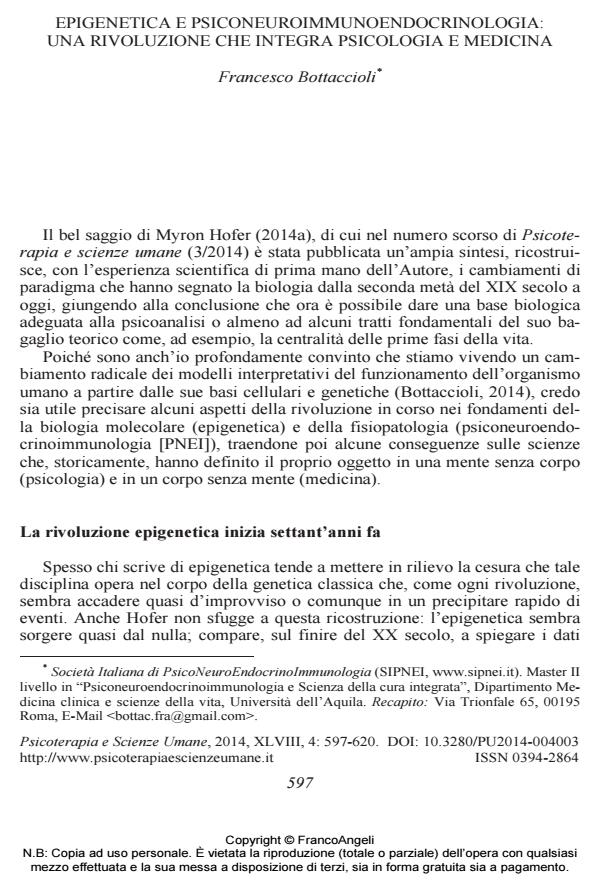Epigenetics and psychoneuroendocrinoimmunology: A revolution that allows for an integration of psychology with medicine
Journal title PSICOTERAPIA E SCIENZE UMANE
Author/s Francesco Bottaccioli
Publishing Year 2014 Issue 2014/4
Language Italian Pages 24 P. 597-620 File size 106 KB
DOI 10.3280/PU2014-004003
DOI is like a bar code for intellectual property: to have more infomation
click here
Below, you can see the article first page
If you want to buy this article in PDF format, you can do it, following the instructions to buy download credits

FrancoAngeli is member of Publishers International Linking Association, Inc (PILA), a not-for-profit association which run the CrossRef service enabling links to and from online scholarly content.
The main characteristics of the ongoing revolution in life sciences are reconstructed, and the history of epigenetics as an alternative to the dominant paradigm of the last half century, based on the "central dogma of molecular biology", is described. The main research literature linking social and environmental influences on cellular epigenetic modifications is also presented. Conscious and unconscious mental events may produce epigenetic marks, and this is possible because psychoneuroendocrinoimmunology (PNEI) research has found evidence that psychological and biological levels communicate and influence each other. From this revolution, a complex vision of the individual and of vital microsystems emerges, so that both the organism and the genome are non-reductionistically explained and interpreted. A simplified and fragmented vision of the human being can be abandoned, so that we can redirect research and establish new bases for care, integrating psychology and medicine.
Keywords: Epigenetics, psychoneuroendocrinoimmunology (PNEI), reductionism, new biology, unity of knowledge
- Come gli stati psichici si traducono in molecole biologiche e come questo cambia la medicina e la psicologia Anna Giulia Bottaccioli, Francesco Bottaccioli, in PSICOTERAPIA E SCIENZE UMANE 1/2023 pp.107
DOI: 10.3280/PU2023-001012
Francesco Bottaccioli, Epigenetica e psiconeuroimmunoendocrinologia: una rivoluzione che integra psicologia e medicina in "PSICOTERAPIA E SCIENZE UMANE" 4/2014, pp 597-620, DOI: 10.3280/PU2014-004003